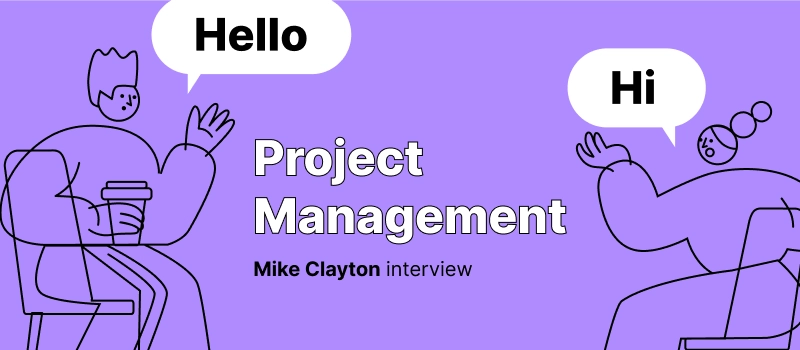
As a teacher, you know that every day brings new challenges. Whether it’s managing a classroom of rowdy students or finding ways to keep lessons interesting, there are always hurdles to overcome. But don’t worry – we’ve got some solutions to the most common challenges of teaching.
Keep reading for tips on how to make your job a bit easier!
Understanding Your Students
Why is it important for teachers to understand their students well? It’s simple, really. The better they know their students, the more they can help them grow – academically, emotionally, and socially.
It’s not just about knowing which kids need extra help with their homework or which ones are likely to act out in class. It’s also about understanding what makes each child tick, what motivates them, and what challenges they’re facing both inside and outside of school.
When teachers have this type of insight, they can connect with their students on a much deeper level and make a lasting impact on their lives. However, this can be difficult when there are so many students in each class and when teachers are constantly being pulled in different directions.
So, what can you do?
🗝️ Solutions:
One way to get to know your students is to take time to talk to them, both inside and outside of class. Ask them about their goals and aspirations, and find out what subjects they enjoy most (and least). You can also ask their parents or guardians about your students’ academic history and any special needs or accommodations that need to be made.
It is also vital to create a safe and supportive environment in your classroom where everyone feels comfortable sharing their ideas and asking questions.
By doing all that, you will not only better understand how your students learn but also get insight into what helps them show their best.
Personalized Learning
Anyone who has ever set foot inside a classroom knows that one size does not fit all when it comes to learning. Every student is different, with unique strengths, weaknesses, and interests. Thus, it’s not right to expect them to learn the same material at the same pace. Otherwise, many students can quickly get bored or frustrated if they are not able to keep up with the rest of the class.
Personalized learning is an emerging educational model that seeks to address this issue by tailoring the educational experience to the individual needs of each student. While this approach holds great promise, it takes a lot of effort and time to undertake it in practice.
Here are a few simple tips to help you start.
🗝️ Solutions:
- Set individual learning goals. Once you have a good understanding of your students’ needs, you can start creating learning goals that are specific to each one of them. These goals should be challenging but achievable, and they should be aligned with the state’s standards for education.
- Provide a variety of learning experiences. Research, experiments, brainstorming, and group discussions are just a few examples of these. There are also a number of excellent educational apps and websites that can be used to supplement your teachings.
- Get organized. Prioritize the individual needs of each student and create a system for tracking progress. This will help you stay on top of creating personalized learning plans and ensure that no student falls through the cracks.
- Delegate. If you have a team of teachers or teaching assistants, assign each person a few students to create personalized learning plans for. This will lighten your load and allow you to focus on the students who need the most attention.
Overall, creating a good personalized learning plan is a long-term process. However, it’s definitely worth the effort and time invested because it gives students the best possible chance for success.
Time Management
Anyone who has ever tried to manage their time knows that it can be a challenge. But for teachers, time management is often a matter of survival.
With a never-ending to-do list and constantly changing priorities, it can be hard to stay on top of everything. Luckily, there are some strategies that can help.
🗝️ Solutions:
- Make a schedule and stick to it. A good schedule will help you stay on track and ensure that you’re using your time wisely. Try to block off time for each task and stick to it as best you can.
- Delegate and ask for help. Don’t try to do everything yourself! Delegate tasks to others if possible or ask for help when you need it. This will free up your time so that you can focus on more significant
- Take breaks. It’s vital to take breaks throughout the day. Otherwise, you’ll quickly become overwhelmed and bogged down. Step away from your work for a few minutes every couple of hours to clear your head and recharge.
- Use time management apps. There are plenty of amazing software products for staying organized and on track. You can find a few good examples of such software in the post below. 👇
Student Discipline in the Classroom
In any other system, there has to be a set of rules that everyone agrees to follow in order for things to run smoothly. The classroom is no different. For students to learn effectively, there needs to be some discipline involved.
However, classroom management is a difficult task, and dealing with disruptive students can be frustrating. Some talk too much, while others can’t seem to sit still. Some refuse to do their work, while others constantly argue with the teacher.
The question is how to get through the school year with minimal disruptions.
🗝️ Solutions:
Teachers can promote student discipline by setting clear rules at the beginning of the school year and consistently enforcing them. Students need to know what the consequences are for not following the rules, and they need to see that those consequences are consistently carried out. This will help create an environment where everyone knows what is expected of them, and they are more likely to behave well.
Besides, teachers can try to engage students in their lessons by making them interactive and hands-on. This will keep them better focused on the task at hand.
Of course, there will always be times when someone steps out of line, but having a system in place will help to minimize those instances and make the classroom a more disciplined environment overall.
Weight of Responsibility
It’s no secret that teachers are under a lot of pressure. Not only are they responsible for educating young minds, but they also have to contend with the ever-increasing expectations of administrators and parents.
In a situation like this, it’s easy to feel overwhelmed by the weight of responsibility and forget about your own needs while constantly striving to excel professionally and trying to please others. Nevertheless, there are some things that teachers can do to manage this stress.
🗝️ Solutions:
First, it’s essential to develop a good support system. This can include colleagues, friends, and family members who can offer advice and assistance when needed.
Additionally, teachers can try to find methods of stress relief that work for them. This might involve exercise, relaxation techniques, or simply taking some time for oneself.
By taking care of yourself and putting your needs above everything else once in a while, you will be able to manage the teacher challenges that come with professional responsibility and maintain a healthier work-life balance.
Excessive Workloads and Overtime Work
It’s not uncommon for teachers to feel like they’re constantly running on empty. But when workloads become excessive, and teachers are expected to work overtime, it can start to take a toll on their health and well-being.
Not only can this lead to burnout, but it can also affect the quality of instruction because when teachers are stressed and overworked, they’re less likely to be able to give their students the attention and care they deserve.
In addition, excessive workloads can make it challenging to keep up with current research and best practices in teaching. Therefore, both school admins and teachers themselves need to be aware of the potential problems that can come with unmanageable workloads.
By ensuring that teachers have adequate time to perform their duties, schools can create a healthier learning environment for both students and educators.
🗝️ Solutions:
To deal with excess workloads on a personal level, teachers can try to set aside time for themselves outside of work hours. This can be used for hobbies, relaxation, or anything else that helps to reduce stress. Additionally, teachers can stay organized by creating a personal work schedule or using a planner.
On an organizational level, schools can create policies limiting the amount of work that each teacher is expected to do outside of school hours. Additionally, administrators can provide educators with such resources as support groups or work management software to help teachers manage their time and tasks better.
A perfect example of such software is actiTIME, as it is helpful in managing workloads at both the individual and the school-wide levels:
- Teachers can apply it to create daily / weekly work schedules and collect accurate data for the analysis and improvement of personal productivity.
- As for school admins, they may use actiTIME to allocate workloads and track tasks in progress, which makes it easier to understand whether teachers have enough or too much on their plates.
Besides, actiTIME lets users track time with up-to-minute precision and, thus, helps to control and reduce overtime without a hitch. So, in case you’re looking to achieve a healthier teacher work-life balance and enhance team performance, it definitely worth a try!
Sign up for a free 30-day trial here.
Communication with Parents
Any teacher will tell you that one of the most challenging aspects of the job is communication with parents. In an ideal world, parents would be supportive and involved in their child’s education. However, the reality is often quite different.
Parents can be busy, distracted, or simply uninterested in what’s going on at school. As a result, they can be difficult to reach and reluctant to engage in conversations about their child’s progress. This can make it impossible for teachers to keep parents informed and up-to-date on their child’s performance.
Ultimately, effective communication is a vital part of being a teacher, but how can you build strong relationships with parents?
🗝️ Solutions:
- Be responsive to parents’ questions and concerns. Whether via email, phone, or in person, teachers should make an effort to promptly address any issues that parents bring up.
- Stay proactive in communicating with parents. Keep them updated on their child’s progress and alert them to any problems as they arise.
- Keep communication regular. For instance, you can send home a weekly update on what’s been going on in class. This can be as simple as a one-page letter or email. Besides, make yourself available for parent-teacher conferences at least twice a year. This gives parents an opportunity to ask questions and share their concerns.
Bullying
Bullying has always been a problem for schools and teachers, but in recent years it has become an increasingly pressing issue – with the rise of social media, bullies now have a whole new platform to harass and intimidate their victims.
Studies have shown that bullying can have a profound impact on a child’s academic performance and mental health. That’s why schools and teachers are under increasing pressure to address the problem. However, this is not always easy.
🗝️ Solutions:
- Create a culture of respect in the classroom. A safe and supportive environment is key to reducing the incidence of bullying in the classroom. Students need to feel like they can be themselves without fear of judgment or ridicule.
- Monitor student behavior both in and out of the classroom. Bullies are often adept at hiding their behavior, and they often target students who are reluctant to speak up. Thus, you need to be able to read the signs that someone is bullied or is bullying others. If bullying is witnessed or reported, it should be dealt with swiftly and appropriately.
- Make yourself available to students who may be struggling with bullies. Spend some time with those students and talk to them in private to understand their feelings. Encourage victims of bullying to build friendships with peers and make a mental health referral if you notice some signs of trauma or severe psychological distress in them.
Being a Role Model for Students
Teachers are often seen as the people who have all the answers. But while they might be experts in their field, they also need to be able to relate to their students and understand the challenges they face both inside and outside the classroom.
Unfortunately, this isn’t always easy.
Teachers are human beings with their own set of flaws and shortcomings. It can be hard to live up to the expectations of students, who often see their teachers as perfect creatures who know everything and never make mistakes.
The pressure to be a role model can be overwhelming, and it’s not uncommon for teachers to feel like they’re constantly being judged. Thankfully, most teachers are up to the challenge. They understand the importance of setting a good example for students, and they work a lot to ensure that they always represent the best of what it means to be a teacher.
🗝️ Solutions:
To be an effective role model, a teacher must first be able to connect with their students on a personal level. This requires creating an atmosphere of trust and respect where students feel comfortable sharing their thoughts and ideas.
Once this rapport has been established, teachers can begin to share their own experiences and wisdom with their students. Doing so lets students see the importance of hard work, determination, and perseverance.
By setting a good example, teachers can show their students that it’s possible to overcome obstacles and achieve success. And while teachers might not always be perfect, they can use their own mistakes as opportunities to learn and grow.
Digitalization and Technological Advancement
As digital devices become increasingly commonplace in society, inevitably, they will also find their way into the classroom. While there are many advantages to this trend, it also presents some challenges in teaching.
One of the most significant challenges is keeping up with the ever-changing technology. New devices and platforms are constantly being introduced, and it can be difficult for teachers to stay ahead of the curve.
Another teacher challenge is integrating technology into the curriculum in a way that is both effective and engaging. When used correctly, digital tools can enhance the learning experience. However, when misused, they can be distracting and even counterproductive.
🗝️ Solutions:
- Keep up with the latest tech trends in your field. You may do so by reading tech blogs, signing up for newsletters, or joining online communities.
- Strategically integrate technology into lesson plans. This can involve using online resources, incorporating PowerPoint presentations, or even having students use laptops or tablets during class.
- Adopt technology to boost your own productivity. There are myriads of apps and tools that help to build a more streamlined workflow and simplify communication with parents, colleagues, and students. Using them allows you to save a ton of time and dedicate more energy to the tasks that matter most.
Conclusion
While the challenges of teaching may seem daunting, there are solutions. With a bit of creativity and out-of-the-box thinking, you can develop strategies to overcome these obstacles. So put on your teacher hat and get ready to face the challenges head-on! Who knows, you might even enjoy it.

















































